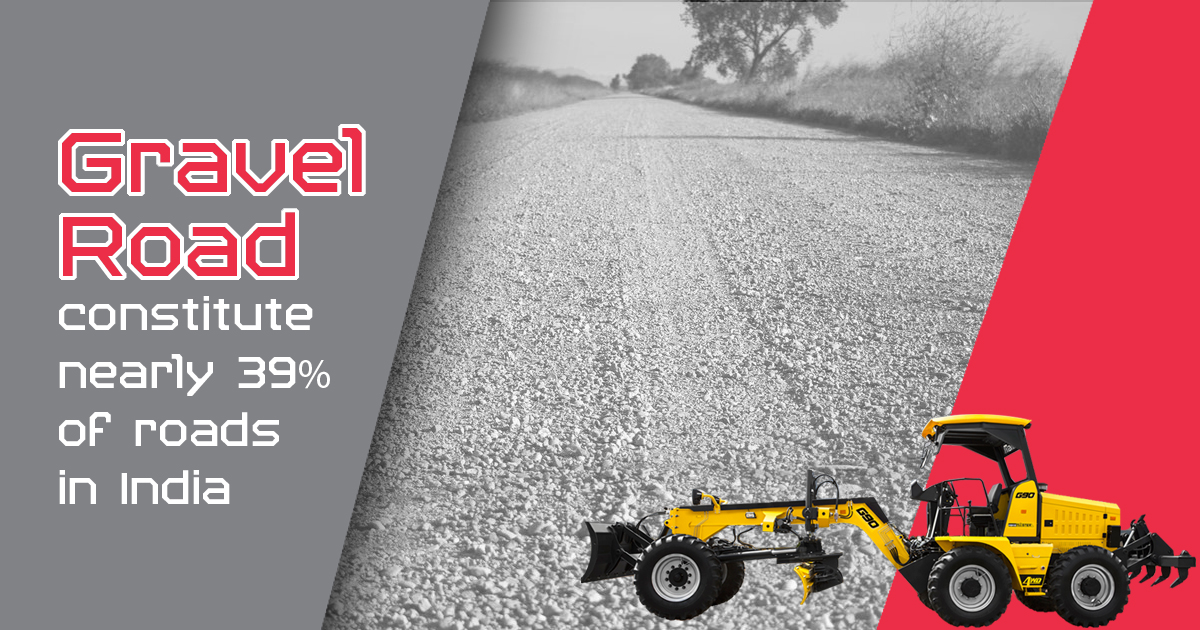Building a Great Gravel Road: 10 Basic Principles

Unpaved road surfaced with gravel is known as the gravel road. In India, nearly 39 per cent of roads are unpaved and they are mostly the gravel roads found in rural regions. Hence, it becomes imperative to ensure that the gravel roads that connect most of the rural areas of the country are properly built.
However, building a gravel road is not an easy task. It involves meticulous planning, preparation and usage of specialised equipment. This is to ensure that the road is smooth, has uniform surface which can handle all types of loads and does not break easily in extreme weather conditions.
So, whether you aim to build a short stretch or a complete network of gravel roads covering a large area, it is imperative that you understand the basics of building a gravel road. Thus, in order to get a detailed insight about how to build a great gravel road, read on the pointers below...
1. Determine the road usage:
Which type of vehicles would be using the gravel road will define various things in the gravel road construction process. In fact, if you have this information, then you can easily determine the ideal path and width of the road as well as the required depth of the base material.
Take an example, in case of a gravel road that is intended to support heavy-duty vehicle, the road has to be kept rather straight with less curves and switchbacks to accommodate the limited manoeuverability of the heavy vehicles. Further, it would be much stronger than the gravel road which is intended for light vehicles and low traffic volume.
2. Get the right machinery and operator to work:
A lot depends on the road construction equipment that is used. Like in the case of any other type of road construction project, gravel roads also need the right machinery which can build quality road and extend its service life.
Not only having the right equipment is important but it is equally necessary to hire an experienced equipment operator. Take an example, if you are using a motor grader, then the operating speed of the equipment along with the angle and tilt of the moldboard can either make or break the road. Here, it is worth the mention that only an experienced motor grader operator will know these tactics and principles well. So, the importance of hiring an experienced equipment operator cannot be undermined.
3. Use the right materials:
Just like using the right equipment and operator is important, making use of the right material as per the need is also equally necessary. Like if you wish to have a dry and stable base, then soils with high clay content or moisture should not be used at all. Typically, in order to build a smooth and firm top surface of the road, best quality of gravel consisting of a combination of fractured stone, sand and fine particles with a binding characteristic should be used.
4. Compact the soil properly:
Like grading, soil compaction is also one of the most important processes in gravel road construction. Soil compaction helps in reducing the volume of water and air in the soil. This helps in creating a harder, denser and more durable surface that can resist heavy traffic and extreme weather conditions easily.
5. Build a base that is solid:
It goes without saying that on a stabilised base, a good gravel road is built. In order to obtain a stable foundation, binding agents such as cement, calcium chloride, salt or lime should be mixed into the soil using a stabilising machine. Then the soil compaction process should be carried out to get a firm foundation.
6. Construct the gravel road in layers:
Gravel roads should always be constructed upwards in layers from a stable base. Before applying the final surface layer, the base layer should be allowed to harden and settle. If the base is poor, then the quality of the road would not be good and then no amount of top grading can save that road.
7. Design the road to sustain extreme conditions:
The gravel roads should be designed and built in such a way that they sustain heavy vehicles, high traffic volumes as well as worst weather conditions. In cases where the road would be used by large trucks, make it a point to never use gradients more than 10 per cent. You also need to ensure that the road is wide enough to accommodate all types of vehicles travelling in both directions.
8. Ensure proper drainage:
It is a known fact that those gravel road last longer and require less maintenance that have proper drainage. If crowns and shoulders are properly shaped and there are appropriate ditches, culverts and drains, then water can be easily channelled away from the gravel road surface.
9. Apply surface strengthening solutions
Bituminous surface treatment should be done when you want to make the gravel road smooth and free of cracks, ruts and potholes. This also makes the surface hard, all-weather and water-resistant.
10. Maintain the road regularly:
Regular grading of gravel roads is necessary to keep them in good condition. Common maintenance tasks may include reshaping the road, clearing the drainage system of foliage and rubble and removing any excess material.
Thus, by following the above mentioned points, a great gravel road can be constructed. In addition, construction equipment like motor graders can also help in doing so. Particularly, Mahindra Construction Equipment’s Mahindra RoadMaster G75 which is made in India for the Indian roads deserves a special mention here. It can serve as an ideal grading machine for spreading and grading of earthwork in different types of roadwork including the gravel roads across the nation.









